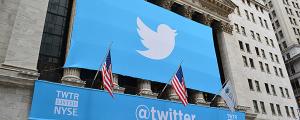Goldman Sachs declares bull market to be over
As the finance world continues to convulse over coronavirus, sobering news comes in the form of a note from Goldman Sachs. According to analysts at the financial services giant, the coronavirus may have finally killed the bull run that had kept momentum since the 2008 crash.
The conclusion of David Kostin and the equity strategy team at Goldman Sachs is that the current market-sell off marks the end of an era of growth that followed the recovery after the last crisis.
“After 11 years, 13% annualized earnings growth and 16% annualized trough-to-peak appreciation, we believe the S&P 500 bull market will soon end,” Goldman said in a note to clients published Wednesday.
“On February 27th we lowered our 2020 S&P 500 EPS estimate to $165. We are now reducing our profit forecast again.”
The firm expects that year-over-year earnings per share for S&P 500 companies will drop 15% in the second quarter and 12% in the third. Goldman appears particularly pessimistic compared to the current consensus expectations of a second quarter increase of 3%, and 8% increase in the third.
Goldman’s team projects that the S&P 500 will drop another 15% over the next three months and bottom at 2,450. At the time of writing the S&P 500 was trading below 2,769.
Hope for the end of the year
The S&P 500 shouldn’t spend the whole year in free-fall, however. According to Goldman Sachs, a rebound of around 31% should be due by the end of 2020, with the S&P 500 jumping back up to ring in 2021 at 3,200.
“Drivers of our reduced EPS estimate include lower crude oil prices and interest rates that diminish Energy and Financial company profits,” Goldman said.
“Domestic business activity outside of those sectors is also likely to be weaker than we originally forecast, as underscored by reduced or withdrawn guidance from a number of firms in recent weeks.”
Market turmoil stirs up memories of 2008 recession
Monday was a massacre in the market. Wall Street’s worst day in more than a decade, saw the S&P 500 drop 7.6%, its largest since December 2008. Meanwhile the Dow suffered its worst drop in history, down 7.8% with a 2,014 point plunge.
There’s a lot to factor in to Goldman’s current analysis. The coronavirus disrupting supply chains, business meetings and the travel industry is only one piece of the puzzle. The oil price war between Saudi Arabia and Russia put massive pressure on energy interests. Goldman now expects earnings per share for S&P 500 energy companies to drop by 50%.
Energy accounts for only 2% of the S&P 500’s forecasted 2020 earnings, whereas financials account for 19%. Goldman points to the record low points of 10-year and 30-year Treasury yields and expected additional interest rate cuts from the Federal Reserve and estimates that this will reduce the S&P 500’s earnings per share estimates for financials by 5%.
Aside from the struggles of energy and finance, there’s another factor highlighted in Goldman’s report–the US election. A potential political sea change has investors hesitant to commit. But at least, this source of uncertainty will resolve by a set date.
Coronavirus and election fears to subside
The S&P 500 started the year trading near 19x forward earnings before coming to around 16x at the time of writing. The severe multiple de-rating is comparable to the 2008 crisis and Goldman expects the S&P 500 to trough at a multiple of around 14x before returning to a multiple around 18x by year-end.
“Our baseline forecast assumes the COVID-19 shock to economic activity and sentiment is ultimately short-lived and the headwind fades,” Goldman writes.
“Under this scenario, by year-end economic and earnings growth will be reaccelerating, the fed funds rate will be at the zero lower bound, the impact of fiscal stimulus will be flowing through to consumers, and political uncertainty will abate following the US elections.”
Trade with Libertex and come out on top in 2020
In the fast-moving global market, a smart trader needs the right tools to succeed. Libertex is a fast, user-friendly trading platform that lets you trade on the financial market 24/7 on the web or your smartphone. More than just a technological solution, Libertex also provides live updates on market trends, trading advice and extensive training materials so that our clients can benefit from our 20+ years of financial market and online-trading experience.
With the international stock exchange always sensitive to political, social and economic uncertaintly it’s essential to keep a diverse and flexible portfolio that’s ready for anything. That’s why Libertex is ideal, since it offers over 240 financial assets including stocks, shares, currencies, crypto, indices, oil and gas, metals and more. Want the best way to exploit market trends? Then register with Libertex and start trading now!


